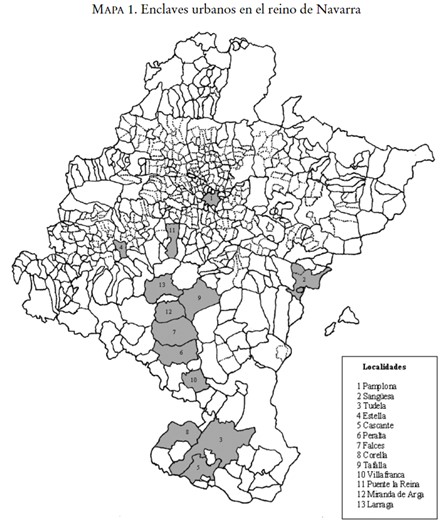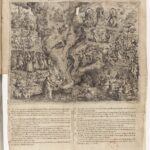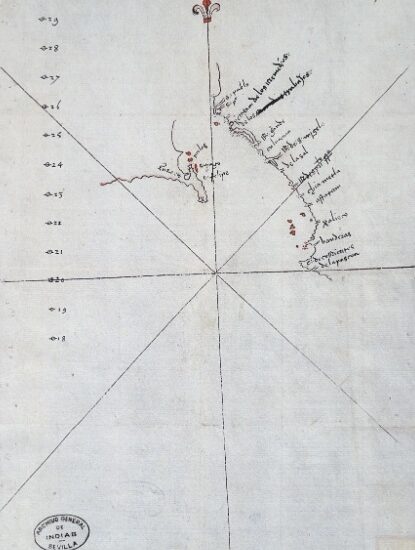
This image is an engraving made by the draughtsman Jan Ziarnko in 1612 for the work Tableau de l’inconstance des mauvais anges et démons, où il est amplement traicté des sorciers et de la sorcellerie, written by the inquisitor Pierre de Lancre (Pierre de L’Ancre) in 1609, following his actions and visits in Lapurdi, one of the historical territories that make up the natural region of Lower Navarre and which are located in the French Basque Country. The phenomenon of witchcraft and witch-hunting, which responds to a complex social, economic, political and cultural causality, flourished in the Spanish context from the first decades of the 16th century until the beginning of the 17th century, with the regions most affected by witch-hunting being those located in the north of the peninsula and, especially, close to the border with France, such as Navarre, the Basque Country, Catalonia and Aragon. Both civil and ecclesiastical courts acted in these trials, with the Inquisition being the main institution responsible for prosecuting these practices after the Junta of Granada in 1526. In addition to civil and ecclesiastical justice, there was also a “popular justice”, exercised by the locals themselves, who in addition to carrying out most of the accusations, were responsible for marginalising and even subjecting those accused of witchcraft to public humiliation. The selected image represents a convent or “sabbat”, as the meetings or town councils of witches and warlocks were usually called. It shows some of the most common stereotypes that were assimilated to witchcraft practices, such as making poison with toads and other magical powders (bottom centre of the image), feeding on children (bottom right), transforming themselves into animals or magical beings with an animal appearance (bottom right), dancing and dancing to the sound of music (bottom right), dancing and dancing to music, flying in order to travel to the Sabbaths – usually on a broomstick – (middle of the picture) or the presence of the devil as a goat, seated on an altar, to whom children are offered (top right) to be sacrificed. The phenomenon of witch-hunting, which had a relative impact on the peninsular territories of the Spanish Monarchy compared to other regions such as France, Poland or the Holy Roman Empire (now Germany), began to disappear in the second half of the 17th century.
Collection: Images
Project: 10. Churches and religions in Europe., 7. Persecuted by justice and powers: rebels, political dissidents and criminals in the history of Europe.
Chronology: XVII
Scope: Primary Education, Secondary Education, Baccalaureate, University
Link: https://gallica.bnf.fr/ark:/12148/bpt6k1516397v/f164.item#
Resource type: Image
Format: Engraving on paperl. [40]-590-[18] p., [1] f. de pl. gr. s. c. ; in-4
Source: Bibliothèque Nationale de France, département Réserve des livres rares, R-7790.
Language: French
Date: 1613
Owner: María del Mar Felices de la Fuente (Modernalia)
Identifier: ark:/12148/bpt6k1516397v
Copyright: Public domain. Biblioteca Nacional de Francia
Abstract: The image represents a "sabbat" or meeting of witches and witches where all the myths related to witchcraft practices are collected, such as the worship of the devil or "billy goat", the sacrifice of children or the elaboration of poison.
Image
Tags






